

The hydration process of slag cement is more complicated than Portland cement At first, the minerals in cement clinker react with water and generate calcium silicate hydrate, calcium aluminate hydrate, calcium ferrite hydrate and calcium hydroxidePortland Slag Cement (PSC) is a type of cement that is made by combining Portland cement clinker, granulated blast furnace slag, and gypsum The slag is a byproduct ofWhat is Portland Slag Cement (PSC)? Properties, Use, Advantages

The hitherto known processes to produce Portland slag cement use cement clinker, granulated blast furnace slag and gypsum to produce blended slag cement The2018年9月1日· Use of BOF slag for cement clinker production The manufacture of cement is an energyintensive process with high CO 2 emissions With regard to economic andCharacteristics of steel slags and their use in cement and

2021年2月1日· The substitution of iron ore with steel slag in clinker production provides an environmentally friendly modification to the manufacturing process During production,Slag cement is a recovered material from the iron production process and because of this, reduces the environmental impact of concrete mixtures by decreasing carbon footprint,HOME | SCA

2017年1月1日· Slag cement and supersulfated slag cement were fabricated by mixing blast furnace slag and ordinary portland cement and adapted to solidify/stabilize heavy1 Introduction Blastfurnace slag is the result of pig iron production and is mainly turned into granulated slag Finely ground it shows latent hydraulic properties and is already usedMetal recovery and conversion of steel slag into highly reactive
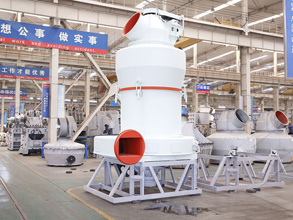
2011年10月28日· The slag cement mixtures produced an energy savings ranging from 211 to 484 percent; a savings in carbon dioxide emissions of 292 to 461 percent; andMolten slag is carried outside and poured into a dump Slag is a byproduct of smelting (pyrometallurgical) ores and recycled metals Slag is mainly a mixture of metal oxides and silicon dioxideBroadly, it can be classifiedSlag

Step 1: Mining The cement manufacturing process starts from the mining of raw materials that are used in cement manufacturing, mainly limestone and clays A limestone quarry is inside the plant area and a clays quarry is as far from the plant area as 25 km The limestone is excavated from open cast mines after drilling and blasting and loaded2020年8月25日· There are three steps of the hightemperature system: Drying or preheating, calcining, and sintering The calcining is the core part of the clinker production; the raw meal is weighed and sent intoCement Production Process | Cement Manufacturing
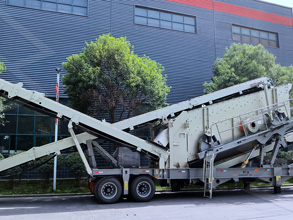
White cement manufacturing process White cement is a type of special cement, belongs to decoration cementIn general, Portland cement is greyishgreen, as the name suggested, white cement is white In the cement manufacturing process, in order to avoid the mixing of colored impurities, calcination of white cement plant mostly use natural gasConcrete is a combination of cement, sand or other fine aggregates, and a coarse aggregate ranging in size from 19 to 25 mm People use concrete in a wide range of construction applications Some applications of the different types of cement include: Plastering, masonry construction, pointing, and other purposesCement: Applications, Manufacturing Process, Types and Tests

2018年8月31日· The granulated slag used for manufacture of slag cement should conform to IS: 120891987 standards The slag constituent shall not be less than 25 per cent and not more than 70 per cent in PSC as per the IS: 4552015 standard Advantages of PSC 1Maximum reduction in heat of hydration: The heat of hydration is considerablyManufacturing Process of Portland Slag Cement The manufacturing of Portland slag cement was mainly developed to utilize the waste product called blast furnace slag The primary focus of the production of Portland slag cement was to use blast furnace slag produced as a waste product in blast furnacesWhat Is PORTLAND SLAG CEMENT? Know The Advantages And

Slag, produced during the ironmanufacturing process, is born when raw materials undergo melting within the intense heat of a blast furnace, reaching a molten state Slag undergoes a structural transformation as it cools rapidly through granulation, gaining cementitious properties Ground to a finer consistency than GU Portland cement, itA manufacturing process that meets the principles of the circular economy Hoffmann Green recovers and promotes coproducts from industry and construction, which are sent to our production plant : Blast furnace slag comes from the metallurgical and steel industry Gypsum/Desulfogypsum are produced from construction site excavated materialThe manufacturing process Hoffmann Green Cements

2011年10月28日· The previous study also reveals that cement manufacturing process is the highest The results disclose the more sustainable concrete manufacturing process which is 50 % of Slag cement and 50%Portland pozzolana cement shall be manufactured by mixing and intergrinding Portland cement clinker, pozzolanic materials, and gypsum The manufacturing process is approximately the same as ordinary PortlandPPC Cement Manufacturing Process Portland

THE CEMENT MANUFACTURING PROCESS Prof Dr Elshafie Ahmed Gad Faculty of Applied Science Chemistry Dept Portland Cement Portland cement is made by mixing substances containing CaCO3 with substances containing SiO2, Al2O3, Fe2O3 and heating them to a clinker which is subsequently ground to powder and mixed with 26 % gypsumProcedure of Dry Process of Cement Manufacturing Various stages of manufacturing of cement by dry process are described below: 1 Crushing & Storage The limestone and clay are ground separately to a size of2 Process Of Manufacture Of Cement Civil Giant

2017年4月23日· The process of manufacture is very simple, and, in brief, is as follows:— The dried granulated slag is mixed with a predetermined quantity of dry slaked lime and ground to an impalpable powder It is then ready for use as cement The slag sand, after being drained, still contains a large percentage of adhering watercement production or (partial) substitution of cement in concrete production reduces these CO2 emissions, especially if material is used which is seen as a waste of other processes, such as Fly Ash (FA) from coal power plants and Granulated Blast Furnace Slag (GBFS) from the iron and steel sector These materials are currently used as cement orFly ash and Blast Furnace Slag for Cement Manufacturing
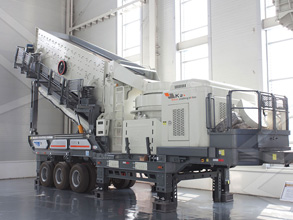
2020年7月20日· Step 3: Grinding,homogenization and Clinkerization Next in cement manufacturing process, the crushed rock is combined with other ingredients such as iron ore or fly ash and ground, mixed, and fed to a cement kilnA kiln is a thermally insulated chamber, a type of oven, that produces temperatures sufficient to complete someThe essential components of cement • Chemically, cement is a mixture of calcium silicates and small amounts of calcium aluminates that react with water and cause the cement to set • Calcium derives from limestone and clay, mudstone or shale as the source of the silica and alumina • The mix is completed with the addition of 5% gypsum toCement: Materials and manufacturing process Greenspec

2019年4月23日· The cement plant’s chimneys should be appropriately monitored to avoid excess dust emission to the atmosphere Installing electro static precipitators (ESP), or baghouses with filter bags, is a must for arresting the dust generated during the cement manufacturing process (Hewlett Citation 2003; Uwasu, Hara, and Yabar Citation 2014)of Slag Reducing the carbon impact of concrete is an important factor in construction material choice Slag cement is a recovered material from the iron production process and because of this, reduces the environmental impact of concrete mixtures by decreasing carbon footprint, embodied energy and the use of nonrenewable materialsHOME | SCA

2014年8月1日· Moreover, there is still need for incorporating a wider range of technology options applied in cement manufacturing processes, as well as cement plant operation details in current LCAs Life cycle inventory of slag cement manufacturing process: s; 2003 Construction Technology Laboratories, Skokie, Illinois (2003) 13 ppProduction and composition The chemical composition of a slag varies considerably depending on the composition of the raw materials in the iron production process Silicate and aluminate impurities from the ore and coke are combined in the blast furnace with a flux which lowers the viscosity of the slag In the case of pig iron production, the flux consistsGround granulated blastfurnace slag

It involves closely controlled chemical reactions between calcium silicate minerals at high temperatures of above 1400 degree Celsius In this process, chemical bonds of key raw materials – limestone, shell, chalk, sand, clays, alumina, iron oxide, etc – are broken down inside the kiln and recombined into an intermediate compound called2020年11月4日· It is created with a combination of upto 45 50% slag, 45% – 50% clinker, a(IS4551989 )Portland Slag Cement, commonly known as PSC, is blended cementPortland Slag Cement | PSC Application | Advantage | Manufacturing

2013年4月10日· Blast Furnace Slag satyendra; April 10, 2013; 1 Comment ; Air cooled slag, BF slag, BF Slag cement, Expanded slag, Glass content, Granultated slag, Leachate, Pelletized BF slag,; Blast Furnace Slag Blastfurnace (BF) slag is defined by the American Society for Testing and Materials as ‘the nonmetallic product consistingSlag is a byproduct from steel plants obtained from blast furnaces, during the separation of iron from iron ore The process involves cooling of the slag through highpressure water jets, which enables the formation of granular particles JSW Cement Company, one of the best and leading GGBS manufacturers in India, is known for its stateoftheGround Granulated Blast Furnace Slag (GGBS) Manufacturer JSW Cement

Cement manufacturing process The cement manufacturing plant can be divided into five steps: Crushing & prehomogenization: cement crusher crush limestone and other materials and stacker and reclaimer homogenize them; Raw material preparation: use cement mill to process materials into required sizes for cement clinker production;5 Slag Management: Product marketing in the best interests of the customer We have taken a close look at the potential uses of our products and hence the standards they need to meet Constant contact with our customers, public agencies, and authorities has ensured ready market acceptance for our productsSlag Management thyssenkrupp
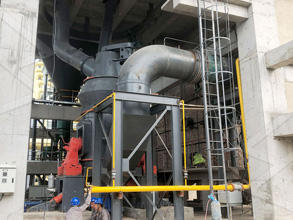
The slag grinding plant is based on the slag material to build the production process For example, slag materials can be applied to cement manufacturing plants The processed slag material can be filled in cement to process slag cement, which can improve performance of cement, reduce cost and increase benefit of whole cement plant2009年5月1日· The overall scope of this study includes the stages outlined in Fig 1, Fig 2, Fig 3Several of the processing stages have been combined to simplify the analysis and the calculation of inventory elements (refer to Section 32)The functional unit of analysis in this study is the production of the equivalent of 20 bags (each bag ∼ 100 lb) of generalA lifecycle assessment of Portland cement manufacturing:

Portland Cement Manufacturing Process The Portland cement manufacturing process can be divided into 6 steps: raw material crushing, prehomogenization, fine grinding, clinker production, cement grinding, cement packing, etc In these processes, we need the assistance of different kinds of cement equipment, such as cement kilns, cement mills2023年12月20日· How cement is made Cement manufacturing is a complex process that begins with mining and then grinding raw materials that include limestone and clay, to a fine powder, called raw meal, which is then heated to a sintering temperature as high as 1450 °C in a cement kiln In this process, the chemical bonds of the raw materials areThe Cement Manufacturing Process Thermo Fisher Scientific
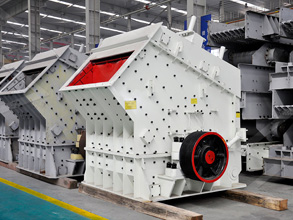
2018年10月27日· To do this, correct treatment of many chemical reaction and heat balances in cement manufacturing process are required In our study, roughly a hundred numbers of pure components, liquid slag and2021年4月30日· Authors have developed the process of making geopolymer cement from fly ash and BF slag/ cement This process has been upscaled to 5 t/d capacity using the Duić N (2016) Environmental assessment of different cement manufacturing processes based on Emergy and Ecological Footprint analysis J Clean Prod 130:213–parative life cycle assessment (LCA) of geopolymer cement

AGICO Cement is a cement plant manufacturer with production capacity of 30,000 tons of equipments and structure parts and 20,000 tons of casting partsown production equipment of Φ8m Vertical Lathe, Φ10m gear rolling machine, 8m Gantry milling machine, 200mm floortype boring and milling machine,120×3200mm bending machine, 150t crane and 40t2018年8月31日· Production of slag cement in India is 1825 mtpa The compressive strength of PSC is generally lower than Ordinary Portland Cement (OPC), however, slag cements of strength equivalent to "43" and "54" grade OPC are available in the market The use of slag cement is very popular in the eastern parts of the country due to easySlag Cement for Wide Range of Applications

World production is around 4 billion tonnes of cement mixed per year China, the United States of America, India, Japan and countries in Southeast Asia are the biggest producers of cement and concrete Cement Manufacturing Process The manufacturing process of making cement is a sequence of steps in a manufacturing plant known as cement millsSteel slags Carlos Thomas, Francisco Agrela, in New Trends in Ecoefficient and Recycled Concrete, 2019 712 Types and classification of steel slags Steel slags (SSs) are usually classified according to the type of furnace in which they are produced The properties of the slag depend on the type of process used to produce the crude steel, the coolingSteel Slag an overview | ScienceDirect Topics

2011年9月18日· One of the economic ways is using red mud in cement production, which is also an efficient method for largescale recycling of red mud This paper provides a review on the utilization of red mud in cement production, and it clearly points out three directions for the use of red mud in cement production, namely the preparation of cement clinkers2023年1月7日· This process increases production by 2–5%, which yields environmental and economic benefits to the cement plant In the manufacturing process of the Portland slag cement, 50–70% slag, 25–35% clinker and 2–5% gypsum are used Portland slag cement is widely used in the coastal areas (Udwig and Zhang 2015)Emission reduction through process integration and exploration

A manufacturing process of masonry cement by using iron tailings, high calcium coal ash, and slag, in which iron tailings, sodium sulfate, early strength agent, fly ash, and or coal cinder are mixed This method has the advantages of less
